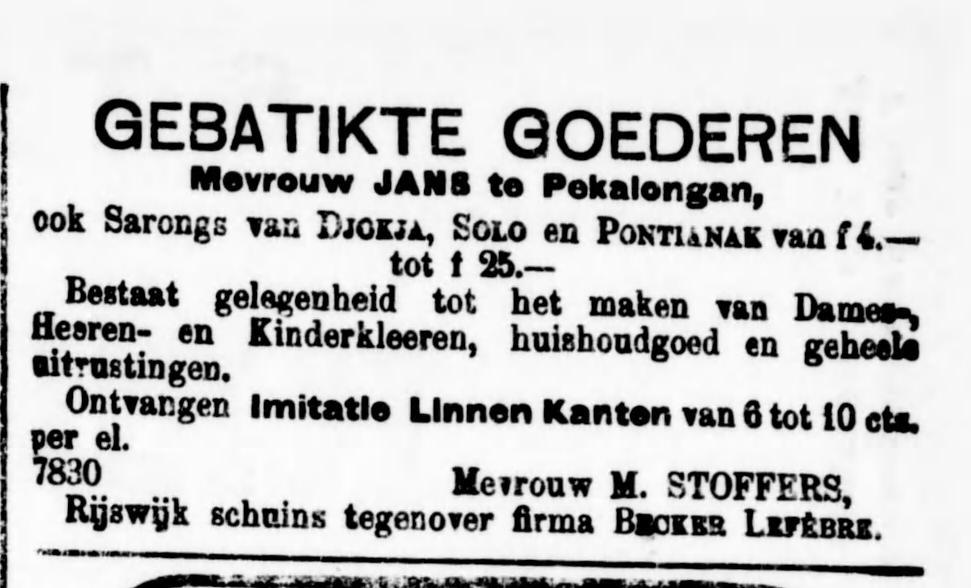Mrs. Adelheid Johanna Paulina Jans (née Veenstra, born in 1850 - died in 1933) was known as one of the first batik producers to produce batik under their own name.
While most batik entrepreneurs from this era had Javanese, Sudanese or Peranakan Chinese ancestry, Jans’ parents were both Dutch (according to Veldhuisen) Helen et al., 2012. She was born and raised in Java, and had started her batik workshop even before her marriage. During this time, “Nederlandsch-Indië” (the Dutch East Indies) was formed due to Indonesia’s colonization by the Dutch. Therefore, her marriage to a Dutch solicitor named Theodore J. Jans provided her with some advantages, such as the ability to become a member of Europe's upper class.
Her privileged status in an upper-class European community in Pekalongan did not change her lifestyle of embracing the local culture. Before her marriage, Jans always wore sarong and kebaya when attending events of the Dutch upper class Helen et al. (2012) . This is most likely due to her adaptation to and embrace of Javanese culture, or perhaps her pride as the owner of a batik workshop.
She lived in a large colonial-style house in the mainstreet of Pekalongan Veldhuisen, 2007, which ran between the Residents of the North and South. She had five children – one girl and four boys.
As mentioned in “Batik Pesisir: an Indonesian Heritage” Helen et al. (2012), some of Jans’ works are well known. She was even in charge of the preparation of an official gift for Queen Wilhelmina of the Netherlands, representing different trades of Pekalongan.
Some of her pieces can also be seen in King Rama V’s royal collection in “A Royal Treasure: The Javanese Batik Collection of King Chulalongkorn of Siam”.
J. Jans’ batik is best known for her floral bouquets, usually drawn in soft pastel-colored motifs and framed in vibrant red ornaments. Her hard work led her to many accomplishments - in 1909, her workshop became one of the biggest ones in town with 60 Javanese batik makers.
Unfortunately, between 1911 and 1915, J. Jans sold her batik manufactory to a Mrs. Wiler, who then sold it to Jacqueline van Ardenne in Pekalongan - some speculated due to financial difficulties. Due to the speculations, J. Jans’ whereabouts after the sale of her workshop remain uncertain - did she move to a friend’s plantation in Semarang? Or did she decide to go to Holland?
